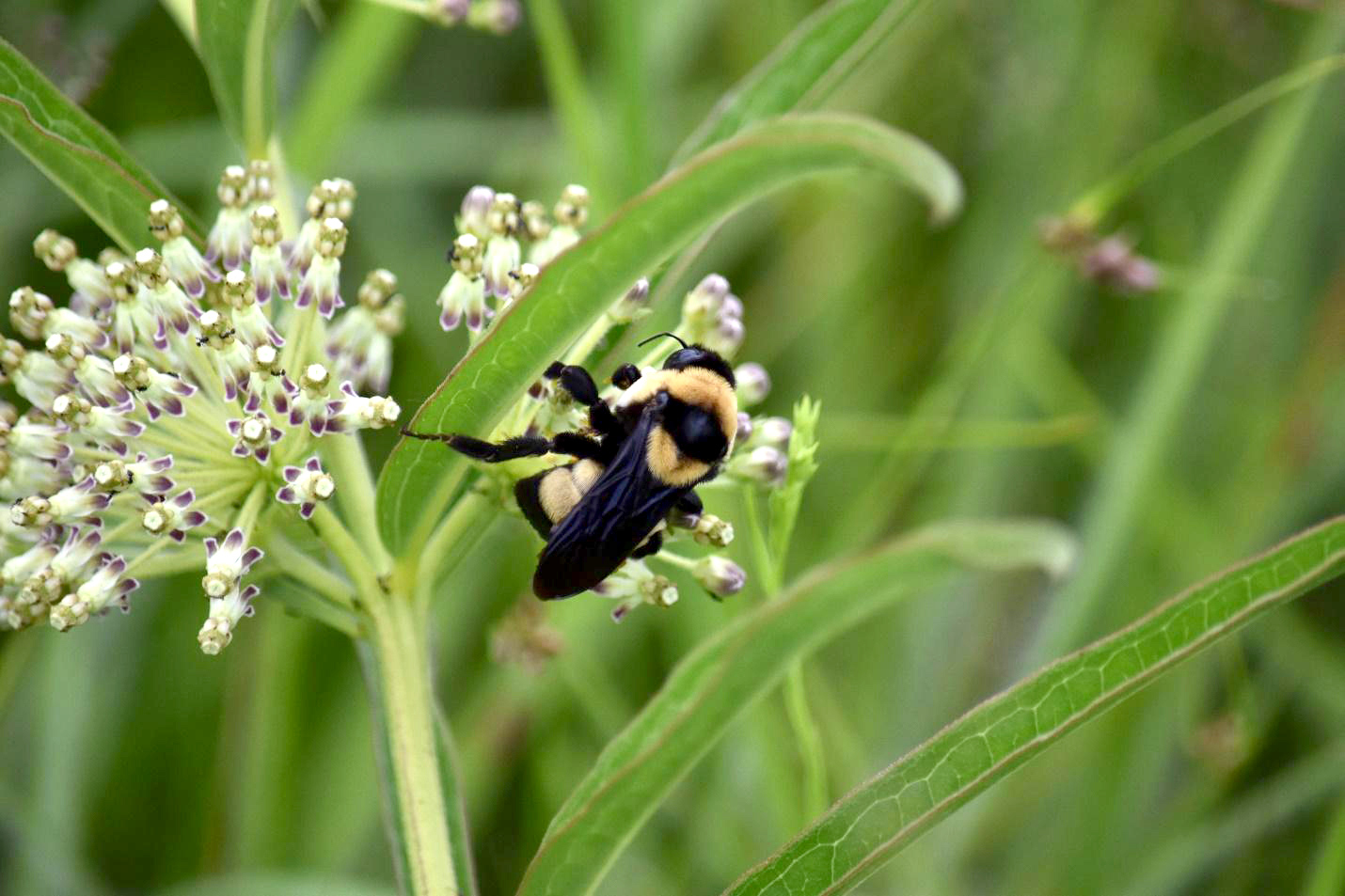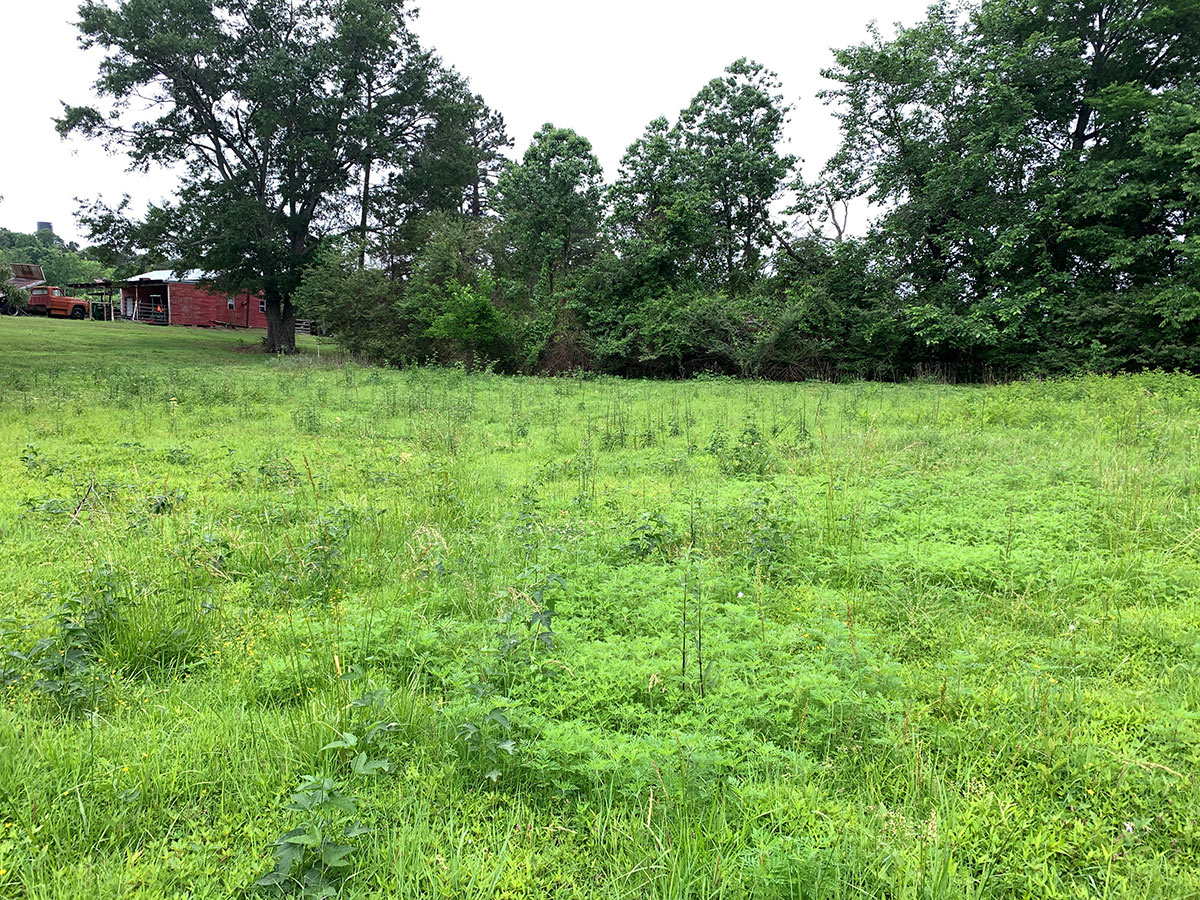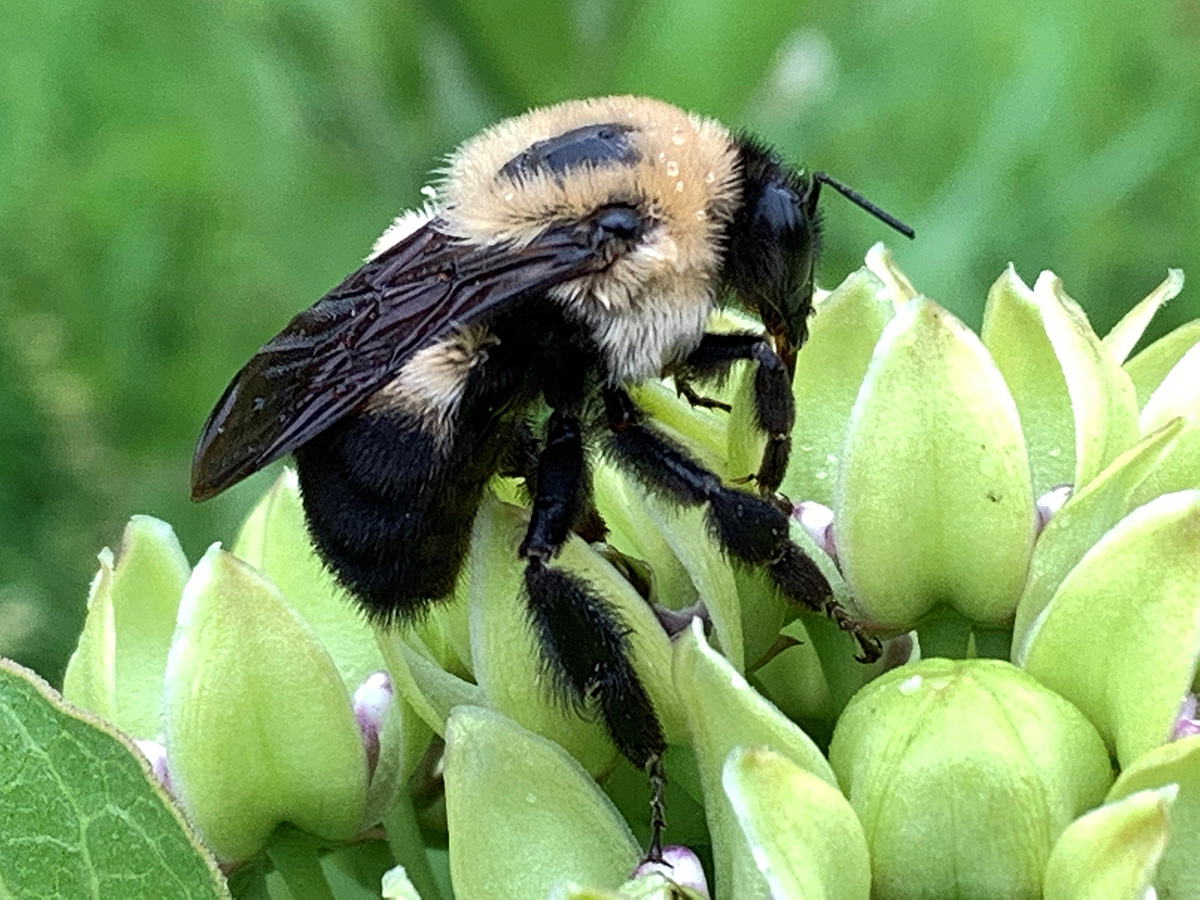Short courses called for a visit to Arkansas prairie
You might be surprised to learn that Arkansas used to have more than one million acres of prairie. Most of it is gone now, but some of the remaining patches are very beautiful and host incredible bees, butterflies, and other invertebrates. Restoration and conservation of such habitats is an important part of Xerces’ work.
Earlier this summer, I found a reason to visit Arkansas prairie. I had the great pleasure of co-delivering three pollinator conservation short courses alongside colleagues from Quail Forever, which is a nonprofit dedicated to conserving quail, pheasants and other wildlife. Each of these May trainings were conducted in different regions of Arkansas. During each session, we visited high quality prairie and discussed methods for restoring prairie on privately-owned farms and ranches.
Our target audience members for these courses were USDA-NRCS field staff in Arkansas. In other words, these folks work for the United States Department of Agriculture (USDA) Natural Resources Conservation Service (NRCS). The USDA-NRCS is a federal agency that works with private landowners like farmers, ranchers and foresters to put conservation practices in place that will benefit soil, water, air, and wildlife.
Each NRCS field staff works with dozens or perhaps hundreds of agricultural producers per year, so we at Xerces view training them about pollinators as a high-leverage strategy for on-the-ground conservation.
A rare southern sight
One of the highlights of this experience for me was our visit to Downs Prairie. This is where I saw my first southern plains bumble bee (Bombus fraternus). In fact, I saw three! All were foraging on flowers of tall green milkweed (Asclepias hirtella). This bumble bee is an endangered species, which highlights the importance of preserving this space.

Scenic blooms of blue and yellow
Another amazing place to visit was Camp Robinson Special Use Area, as its slopes were covered with the deep blue flowers of Carolina larkspur (Delphinium carolinianum) and the bright yellow flowers of largeflower tickseed (Coreopsis grandiflora).
A hopeful landscape
We finished up the last training by visiting a private property near Paris, Arkansas where they began restoring prairie for pollinators in the fall of 2021 by sowing seeds. It will likely be a year or two before this prairie is full of flowers, but a green antelopehorn milkweed (Asclepias viridis) in full bloom was providing food to a brown-belted bumblebee (Bombus griseocollis). (Its rootstock had probably already been there before last fall’s seeding.)


Join us in restoring native habitat on working lands
If you are an agricultural producer and are interested in restoring pollinator habitat on your land, please contact the Xerces Society pollinator program and contact your local USDA Service Center.




